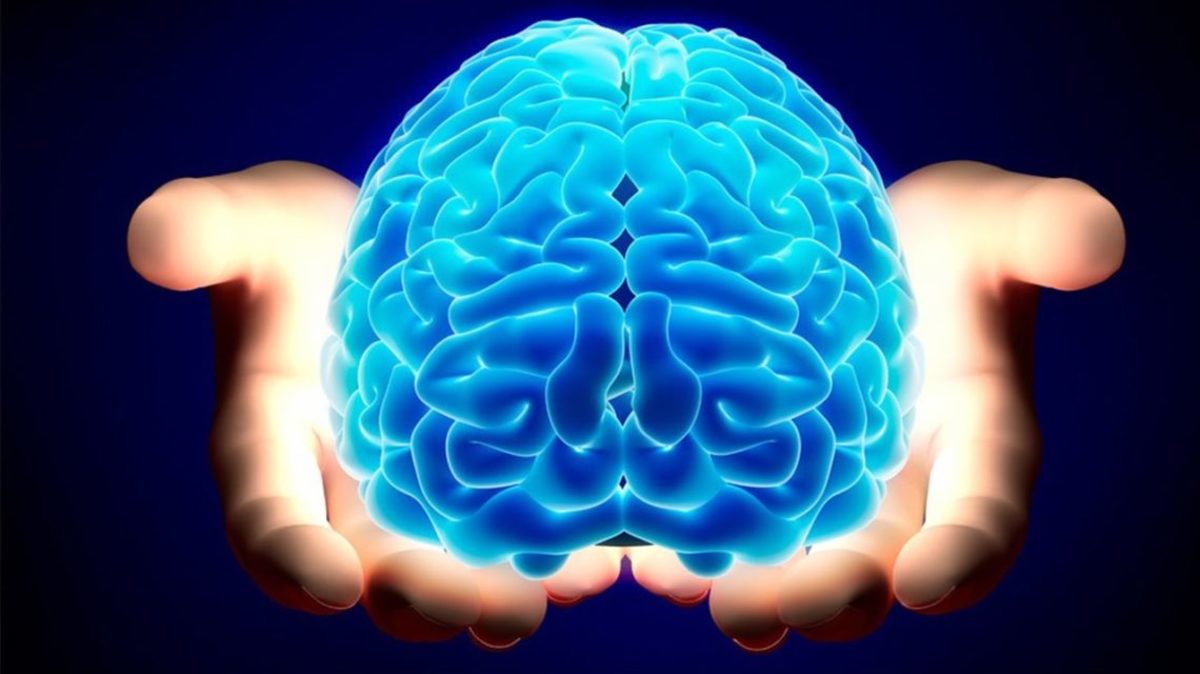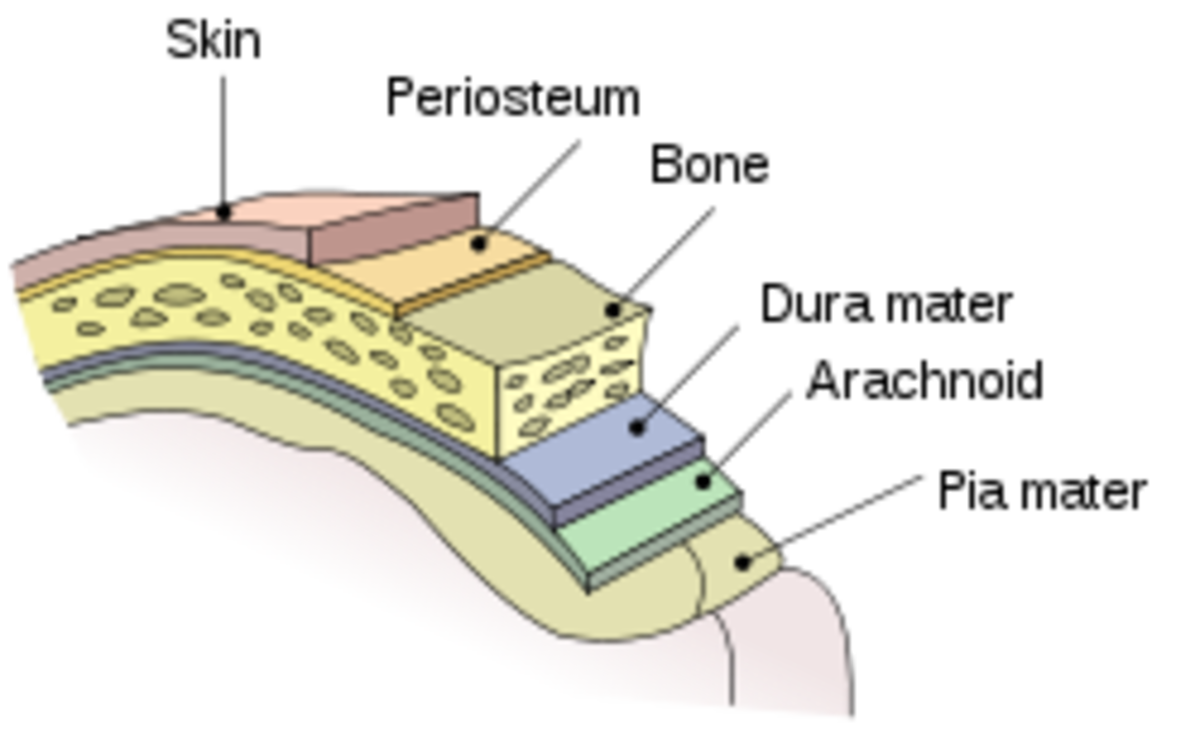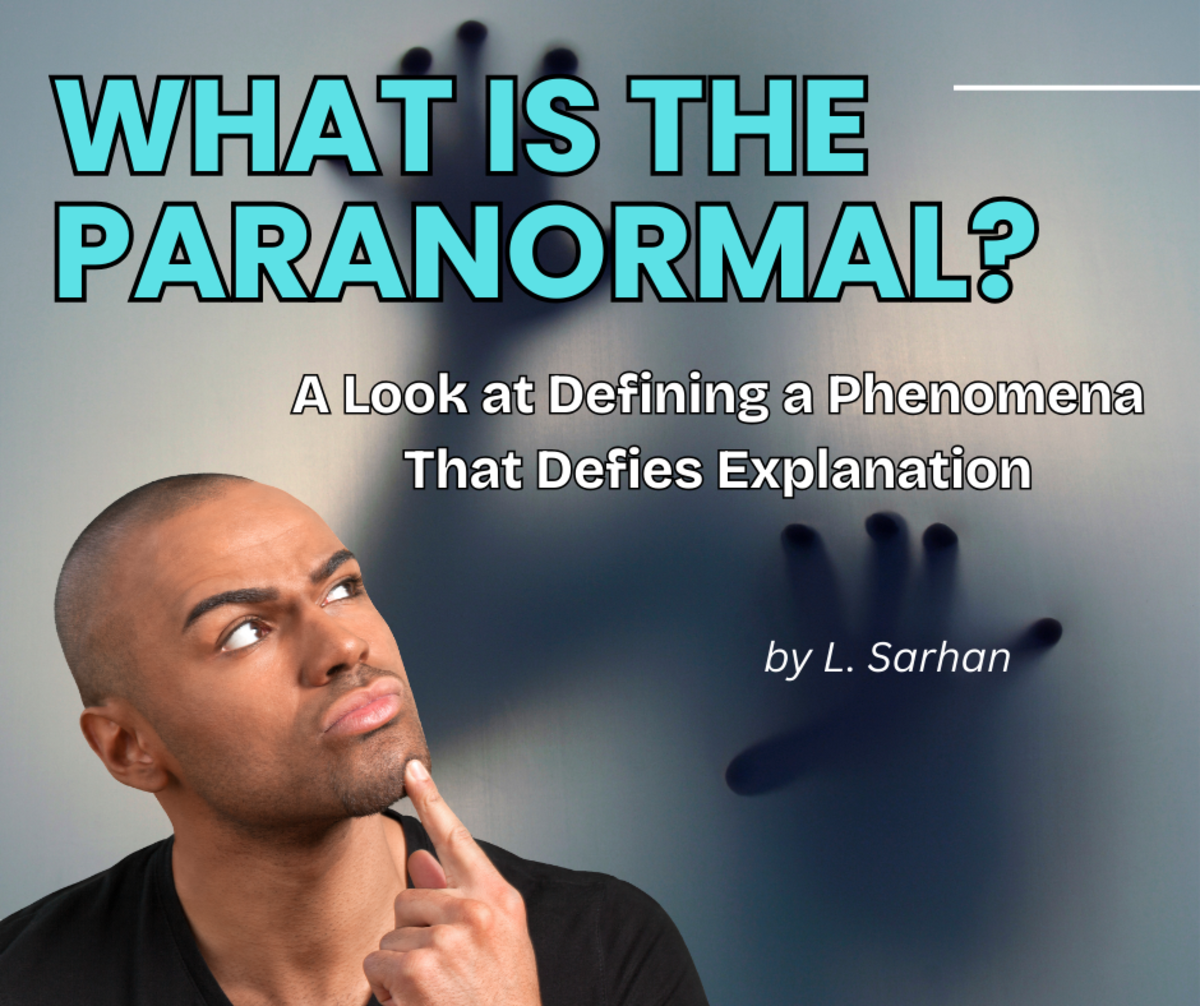Are People In Coma or In a Vegetative State Aware? Do They Hear and Understand Our Words?
Neuroscientists Have Found That Some People Are Aware and Do Understand Speech
Scientists now know that some people in coma, or in a vegetative state, are capable of cognitive activities.
Neuroscientists have been working for over 20 years to determine whether people in coma, vegetative states, or minimally conscious states, are aware. They are still in the early stages of their research, but they have already discovered that some people in these different conditions are in fact aware of their surroundings and of the people around them. They can and do hear and understand speech.
The progress that has been made may enable loved ones of people in these various states of consciousness to have simple communications in the near future. It will almost certainly help people with power of attorney to have better knowledge of what their loved one wants in the way of continued care.
People Have Wondered Over the Years if Their Loved Ones in Coma or Vegetative States Are Aware
Over the years I have had discussions with people both in and out of the classroom regarding whether or not I thought people in coma were aware. Whether or not it was beneficial to visit their comatose loved ones in the hospital and to talk to them.
Many years ago, not long before my mother died from cancer, she went into heart failure and was unconscious so far as her doctors knew. She was in that condition for most of a 24-hour day, unable to communicate with anyone. Initially her doctors had made several attempts to revive her with no success and so then informed us that they believed she would likely die before the day was done.
The following day my mother was conscious and up walking around! She told her doctors about watching them from up near the ceiling of the room they were in, and then proceeded to tell them what they had done and said! They were amazed that she had been aware the entire time, both of what was going on around her and even what was said – and she remembered what they had said. She told me later that one of her doctors had remarked that he would have to be more careful in future with patients they believed were unaware and could not hear what they were saying!
For that reason I have always recommended that people visit their loved one who is unconscious and talk to him or her about current events in the world or in the family -- talk and behave as though their loved one can hear and understand just in case they can.
Not because I believed all people react like my mother did, but because no one could be sure they were not aware. Often people do not regain consciousness sufficiently as my mother did, to tell anyone whether or not they were aware. Better to make that effort just in case your loved one is aware and so that you never have to look back and regret that you did not make that effort.
Not everyone in a comatose state or a vegetative state is aware, but some people are. Unless you know for a certainty that your loved one is not aware, I feel it is better to act as though they are.
Definitions of Consciousness Disorders
Brain Death – All functions of the brain and the brain stem have permanently ceased.
Coma – Loss of consciousness is complete. Cycles of waking and sleeping disappear and the person’s eyes remain closed. Coma is usually temporary, lasting only 2-4 weeks. After that period patients generally become conscious or move into a vegetative state, or a minimally conscious state.
Vegetative state – Sleep-wake cycles occur and the patient’s eyes may open spontaneously or in response to stimulation, but the patient’s behaviors tend to be reflexive, and an automatic response without any thought involved. In recent years Terri Schiavo and Karen Ann Quinlan were diagnosed in this category.
Minimally conscious state – Patients seem vegetative, but sometimes show signs of awareness such as reaching for an object, following a command, or responding to their environment. An example of this given by Dr. Owen is Terry Wallis who regained consciousness after 19 years.
Locked-in syndrome – With this disorder patients are fully conscious and so this is not technically a disorder of consciousness, but they are not able to move and may mistakenly be diagnosed as vegetative or minimally conscious. Some of these patients do retain the ability to blink and move their eyes, but many do not.
Dr. Adrian M. Owen

Note
For individuals hospitalized after a TBI, almost half (43%) have a related disability one year after the injury.
From: Centers for Disease Control and Prevention (CDC)
Doctor Adrian M. Owen and His Goal
Dr. Adrian Owen has held the Canada Excellence Research Chair in cognitive neuroscience and imaging at Western University in Ontario Canada since 2010. He has worked in neuroimaging and cognitive neuroscience for more than 20 years, published more than 200 peer-reviewed scientific papers on his work, written several chapters in science books, and received recognition for his work.
Dr. Owen’s work is with brain-injured patients who are nonresponsive. His first challenge was to determine if these patients were aware despite appearances, and once he did that, to create a means of communication between them and the rest of the world.
Let me be clear. A great deal of progress has been made, but there is still much left to do. Not all persons with brain injuries sufficient to make them unresponsive are in fact aware, or responding to Dr. Owen’s methods for proving awareness, but Dr. Owen has determined that many are. This is the story of how Dr. Owen first started experimenting in this area and how he got to where he is now in his research.
The First Experiment to Try to Determine If Patients In a Vegetative State Are Aware Utilized a Pet Scanner
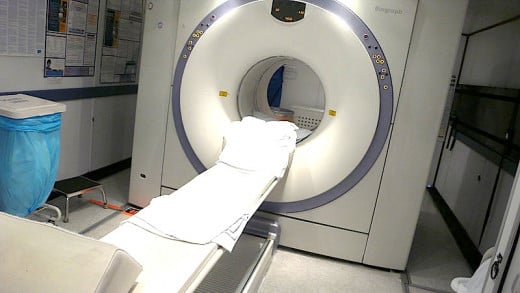
The Importance of Communicating With Unconscious Patients
With advances in medicine, more and more people are surviving serious and severe brain trauma and ending up with consciousness disorders.
These disorders can be caused by injury, disease, stroke, cardiac arrest, or lack of oxygen to the brain for some reason.
It is more important than ever that a way to communicate with these people become available so that they can participate in decisions about their own treatment as much as possible.
Advances in neuroimaging has made communication with patients suffering from consciousness disorders possible in some cases, but not in all cases.
Dr. Adrian M. Owen writing for Scientific American May 2014 issue.
How Dr. Owen Became Inspired to Do the Research
Dr. Owen’s training and expertise was in neuroimaging. Not just taking brain scans, but finding new ways to take those brain scans so that more information could be learned from the scans. He was part of a team that was attempting not only to determine if some comatose or vegetative patients were aware, but also to determine if there was something that could be done to stimulate the brain to be aware and to function closer to what is considered normal. He studies brain injuries that result in disorders of consciousness and the cognitive impact of neurodegenerative diseases. His work at the time took place at Cambridge University in Cambridge, England.
As Dr. Owen states in his own article in the 2014 issue of Scientific American, a young woman who lapsed into a coma from an unnamed flulike illness became the subject of a discussion Dr. Owen was having with a colleague who was an expert in acute brain injury. The colleague suggested they put the young woman in their PET scanner (positron-emission tomography scanner) to see if they could determine if the young woman would show any signs of cognitive activity in her brain.
As Owen points out in his article, neither he nor his colleague had any particular expectations, but they thought it was worth a try to see if their new “brain imaging approaches” might discover something not discernible previously with the old methods.
While the young woman was inside the PET scanner, the doctors showed her photographs of family and friends on a computer screen while watching for brain activity on the scanner. Dr. Owen describes the results of this experiment as “nothing short of extraordinary.” The young woman responded to the photographs much as a healthy aware person might do.
However, the experiment was not conclusive for reasons Owen explains in his article and so it was another 10 years of experimenting before he could say definitively that some people with consciousness disorders are in fact aware. This first experiment, however, was what got the ball rolling and kept Owen working on this issue until he accomplished what he was hoping to discover – definite awareness in some vegetative patients.
Using an fMRI to Determine Awareness In Patients Diagnosed as In a Vegetative State
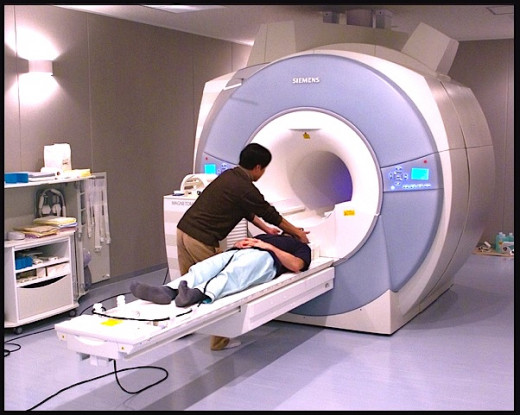
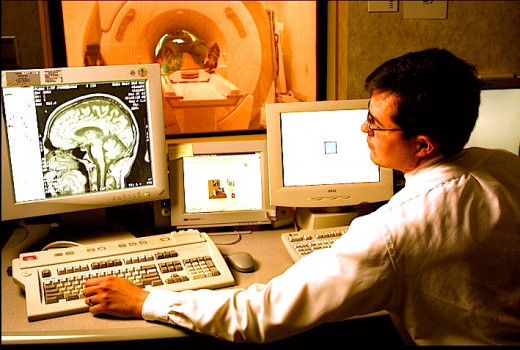
What Would It Take to Convince Dr. Owen’s Team that a Patient Was Actually Conscious and Aware? The Next Step . . .
Over the next 10 years Dr. Owen writes that their team in Cambridge tried many different ways to detect what they referred to as hidden or covert awareness in patients that had been diagnosed as vegetative. Some methods seemed to have more success than others, yet for a long time nothing worked definitively to indicate covert awareness.
The ideal would have been the old method most people are familiar with -- response to command, or squeeze my hand if you can hear me. Unfortunately the patients in this study were too injured to give any kind of physical response.
Instead, Dr. Owen and his team decided to explore whether or not the patients in this experiment could give a measurable brain response just by thinking about something.
Believe it or not, scientists have come far enough that they can watch our brain activity on a brain scanner and know what we are thinking about! They can do even more than that, but I will need to write another article to get into all that is known about our brains, what our brains can tell researchers about us, and did you know? It is even possible to erase memories. I am not sure I like that.
Anyway, back to how Dr. Owen and his team determined that some people with consciousness disorders are in fact aware.
Before starting their experiments on actual vegetative patients, Owen and his team had experimented with healthy volunteers, using them to test different scenarios they would ask the volunteers to think about while a neurologist observed their brain activity in the fMRI (functional magnetic resonance imaging). The fMRI requires no tracer chemicals to be injected like the PET scans do.
Mentally (not literally) playing a “vigorous” game of tennis was one of the scenarios that had worked well with the volunteers. The other was mentally walking from room to room in their home observing things as they went. Both of these mental activities had produced particularly strong fMRI activity in different regions of the brain, with the tennis scenario giving the strongest readings from the premotor cortex, part of the brain that plays a part in planning movement.
Owen wrote that their procedure worked on the very first vegetative patient they tried it on! It was a young woman who had been in a car accident as a pedestrian, and she had suffered some very serious TBI. She had been entirely unresponsive for 5 months before the experiment.
The young woman was asked repeatedly to do the different mental exercises and each time she did the one she was asked to do, it caused the expected parts of her brain to light up on the fMRI screen.
A strange thing happened after it was determined that she was in fact conscious despite appearances and her inability to function physically. Her family, caregivers, nurses, and doctors all started treating her differently. Dr. Owen writes, “While I cannot give details about specific patients, I can say that, in my experience, discovering that a patient is conscious spurs others to communicate, visit, reminisce, joke, and otherwise improve the quality of that patient’s life.”
Over several years, as many patients as possible were tested in this manner, and in fact the testing became more complicated. Using the same scenarios, playing tennis or moving from room to room in their home, patients were asked to use the tennis scenario for yes and moving from room to room in their house for no. The patients were then asked a series of simple questions, the answers for which had been provided by family. Out of 23 people tested, 4 were deemed to be aware and conscious. Not a lot, but it made some big changes in the quality of life for the four.
Once it was established that some of the patients were in fact conscious it was possible for doctors to ask them if they were in pain and in some cases what treatments they would prefer. Whether or not they wanted to continue living in their present state . . .
Communication allowed some patients to participate somewhat in their own treatment and be a part of decision making for their own lives.
fMRI Brain Scans: The top scans are of a normal healthy brain. The bottom set is the brain of a patient in a vegetative state during the experiment.
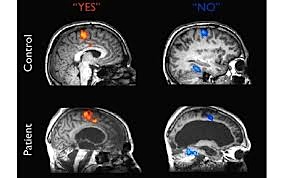
Using EEG To Determine Awareness in Patients Diagnosed In a Vegetative State.
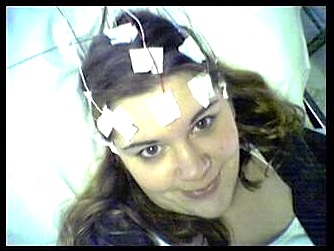
Traumatic Brain Injury (TBI)
In 2010, 2.5 million people sustained a traumatic brain injury (TBI).
TBI contributes to one third of all injury related deaths in the United States.
Most TBIs (nearly 32%) are the result of motor vehicle accidents.
People 65 years and older have the highest rate of TBI related hospitalizations and deaths.
Shaken Baby Syndrome is a leading cause of TBI deaths in abused children.
From: Centers for Disease Control and Prevention (CDC)
Moving Communication Equipment From the Scanner to Bedside?
Scanners (fMRI) are expensive and they are not available in every healthcare facility. Patients with metal implants (plates and/or pins), common in patients who have experienced serious accidents, cannot utilize the scanner at all.
The entire scanning procedure is known to be stressful for the patient from being moved by ambulance to a facility with a scanner, to the patient trying to stay still inside the scanner.
While fMRI scanners have moved the knowledge medical practitioners have of people with consciousness disorders forward considerably, they are not very convenient for general use or practical for some patients.
For those reasons and more, Dr. Owen and his team realized they needed to come up with an easier way to communicate with those patients who were in fact conscious and aware despite physical signs that they were not.
Dr. Owen writes, “Our recent efforts have focused on building a less costly, more portable way of assessing brain activity using electroencephalography (EEG).”
The EEG is noninvasive and depends on electrodes that are attached to the scalp to measure the activity of groups of neurons in the cortex that are the deeply folded layers of the brain. An EEG is not affected by metal implants and so it could benefit all patients that suffer consciousness disorders, and it can be utilized at bedside.
The negative side of the EEG is that it does not detect activity in the deepest brain structures very well and does not always detect a clear response in particular regions of the brain. EEG results are not as dependable as results from an fMRI.
Owen says he and his team are dealing with that drawback by designing mental imagery tasks that produce brain activity on the surface of the cortex. Those are the areas that control simple movements of a person’s arms and legs.
There were some problems with this method of detection compared to the fMRI in the beginning, but by 2011 Dr. Owen and his team were confident that they had found a method using the EEG that was reliable enough to be used to start testing patients at their bedside.
The Building of an EEJeep
The team started by developing what they referred to as their “EEJeep.” That is, they fitted a Jeep vehicle with electrodes, amplifiers and the most powerful laptops they could find, and went on the road taking their equipment to patients instead of patients having to be moved by ambulance to them.
The results of the tests with their EEJeep were about the same as the results they got from using the fMRI. About 19%, or three out of sixteen vegetative patients appeared to be conscious based on the new commands to the patient to imagine squeezing their toes or hands instead of imagining they were playing tennis or walking through their home.
Dr. Owen writes that he and his team were challenged by another research group regarding their findings, because as Dr. Owen writes “EEG analysis is notoriously complicated and their statistical algorithms were sufficiently novel (unusual) and complex that the other research team was not confident in Dr. Owen’s team’s findings.
To answer the questions posed by the competing research team, Owen’s team verified their EEG findings by retesting the patients who had tested positive for awareness with the fMRI test. Most of the patients confirmed as aware with the EEG also passed the fMRI. They also revised their EEG methodology and worked to find credible answers to all other questioned posed by the competing research team that had questioned their findings.
Good science involves peer review and must follow the scientific method for testing hypotheses and new ideas. The same methods described in the report about what methods were used and exactly how they were used in a particular experiment must be repeated over and over and over again, getting the same results, before other scientists in that field will consider them credible.
Oversight of experiments by other experts in a particular scientific field is a good thing. It helps weed out charlatans, and better yet, discourages them before they start. It stringently encourages people to be serious and conscientious in their work, because many eyes are looking over their shoulder at every step.
People depend on the findings of these experiments and sometimes lives are at stake when the methods of some experiments are used as treatment, so it is important that many eyes and many people involved with that particular part of science review and question techniques, methods, and results before any of these things are put into practice generally.
As a result of all those other people in different parts of the world, all experimenting on basically the same thing, and therefore interested in any progress anyone else in their category of work might have made, Dr. Owen reports that he and his team are now working with research teams in two other countries as well as continuing to work with the team in Liege, Belgium where most of the work with fMRIs and EEGs took place.
The challenge from these other teams brought about the development of standard protocols (official procedures and a system of rules) for using fMRI and EEG to detect consciousness in vegetative patients. The best news is that it is now possible to determine if a person in a vegetative state or coma is actually conscious and aware.
Note
In principle, it is already possible to directly ask a patient if he or she wants to continue living in his or her current situation using our fMRI or EEG techniques.
Dr. Adrian M. Owen writing for Scientific American May 2014 issue.
What Comes Next?
There May Not Be Any Guessing for Much Longer
With the new discoveries from recent research, it may not be long before people will know whether or not their love one is capable of simple communications. I say simple communication because it is likely they will be limited to yes and no as far as responding to anything said. They would also, in many if not most cases, be able to understand the same things they understood before their condition trapped them.
Scientists are now looking at designing a computer that can read more complicated thoughts than simply yes or no -- a brain interface that would enable people with consciousness disorders to communicate with the world beyond yes or no.
Most patients with consciousness disorders rarely have control over their eye movements so that a computer could detect whether they have blinked once or twice, or whether they have fixed a gaze on a particular visual. As a result a computer program that could read and analyze eye or facial movement will not be beneficial. Dr. Owen readily admits it is going to be a challenge to come up with something.
For now, it is a great relief to many people who have loved ones that suffer from consciousness disorders to be able to know whether or not they are in fact aware, and hear and understand their words when they visit. It is nice to know that even simple yes/no communication with their doctors is now possible for some patients.
For anyone interested in more specific details about this break through, I highly recommend getting a copy of the May 2014 issue of Scientific American. It can be found online by clicking here.
Sources
CDC Statistics
http://www.cdc.gov/traumaticbraininjury/severe.html
University of Western Ontario
http://communications.uwo.ca/cerc/about.html
Scientific American, May 2014 issue, “Is Anybody In There?”
EEJeep at the Owen Lab (photos and specs)
http://www.owenlab.uwo.ca/faq/the%20eejeep.html
Adrian M. Owen
http://en.wikipedia.org/wiki/Adrian_Owen
© 2014 C E Clark

